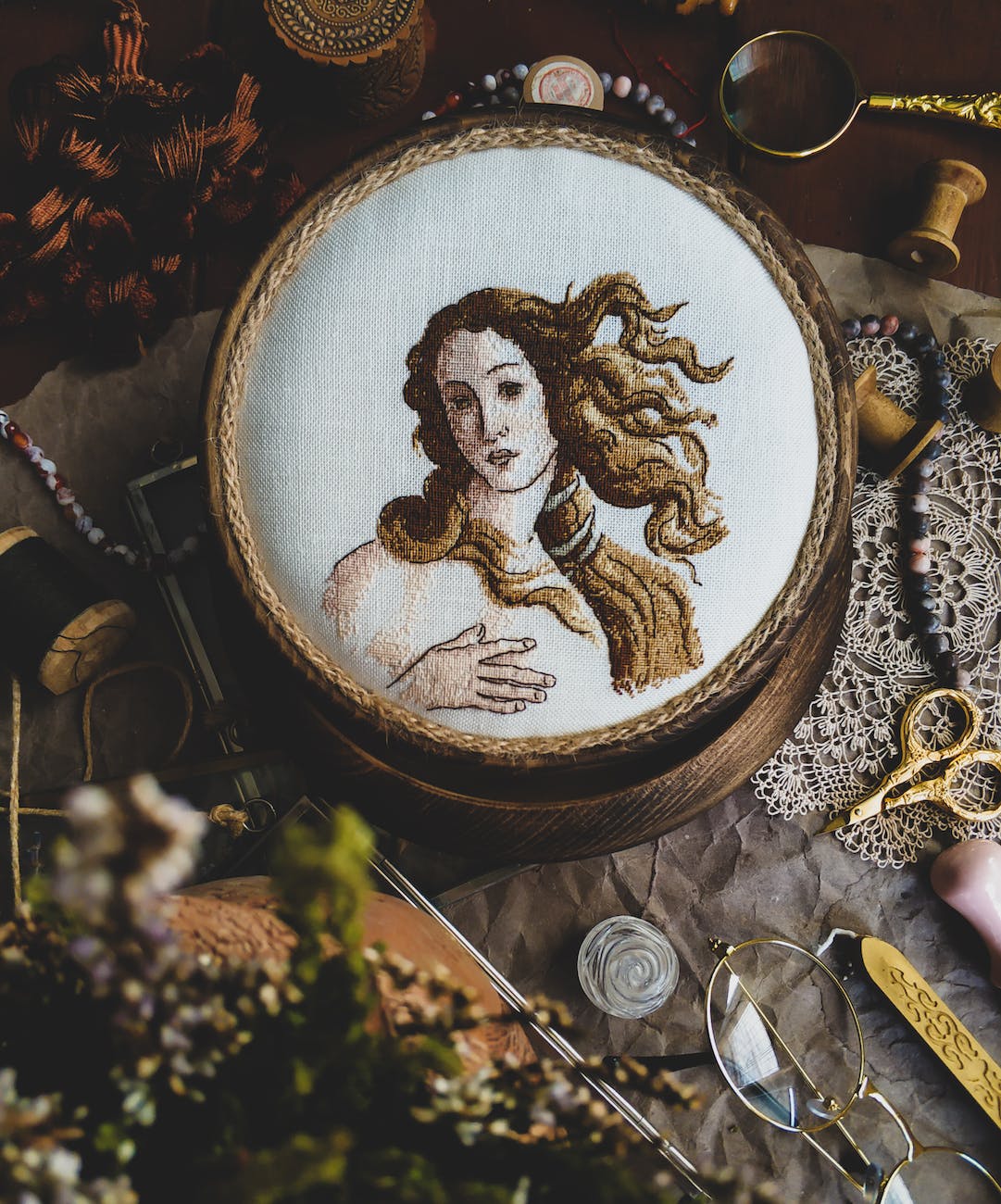embroidery and cross-stitch: exploring similarities and differences
Embroidery and cross-stitch are two needlework techniques that have a lot in common, but also some key differences. Both involve creating decorative stitches on fabric using threaded needles, but the specifics of how the stitches are made and the overall look of the finished product show how these needle arts have unique identities.
Embroidery is a broad term that encompasses a wide variety of stitching techniques. It can be used to create simple or complex designs, and the stitches can be used to create a variety of textures and effects. Cross-stitch, on the other hand, is a more specific type of embroidery that uses a counted thread technique. This means that the stitches are made in a specific order, following a grid pattern.
Here are some of the key differences between embroidery and cross-stitch:
- Stitch type: Embroidery uses a variety of stitch types, while cross-stitch uses only one type of stitch, the cross stitch.
- Thread count: Embroidery can be done on any type of fabric, but cross-stitch is typically done on fabric with a specific thread count. This is the number of threads per inch in the fabric.
- Design: Embroidery can be used to create simple or complex designs, while cross-stitch is typically used to create more detailed designs.
- Time commitment: Embroidery can be a more time-consuming process than cross-stitch, as there are more stitch types to learn and more stitches to make.
Ultimately, the best way to choose between embroidery and cross-stitch is to consider your own interests and preferences. If you are looking for a versatile technique that can be used to create a variety of designs, then embroidery is a good choice. If you are looking for a more specific technique that is well-suited for creating detailed designs, then cross-stitch is a good choice.
No matter which technique you choose, both embroidery and cross-stitch can be a rewarding and enjoyable way to express your creativity.
How Did Embroidery and Cross-Stitch Originate?
Embroidery and cross-stitch have been around for centuries, with examples dating back to ancient China, India, and the Middle East. In medieval Europe, embroidery was popular among nobility and done to decorate clothing, household items, and church vestments. Cross-stitch emerged as a form of counted-thread embroidery in which X-shaped stitches were used to form designs on fabric.
Both embroidery and cross-stitch were an integral part of a young woman’s education until the Industrial Revolution decreased the need for handmade decorative works. By the 19th century, embroidery and cross-stitch saw a resurgence as leisure activities for Victorian ladies who displayed their work in elaborate frames. Embroidery and cross-stitch continue to be popular handcraft hobbies today.
What Fabrics and Threads Work Best for Embroidery?
While embroidery can be done on all kinds of fabrics, cross-stitch is most commonly worked on lightweight evenweave fabrics like Aida cloth or linen. These fabrics have a regular grid pattern with spaces for the cross stitches.
Embroidery uses a wider variety of threads and yarns. Common embroidery threads include floss, perle cotton, and stranded cotton. Yarns like wool, silk, and metallic can also be used. Cross-stitch is generally worked with embroidery floss. The floss is divided into two or three strands for the right gauge.
Embroidery employs various sized needles to accommodate different weights of thread. Cross-stitch uses a single type of needle, the tapestry needle, which has a blunt end and large eye.
How Does the Appearance of Embroidery Differ from Cross-Stitch?
The most noticeable difference between embroidery and cross-stitch is the appearance of the stitching. In embroidery, stitches are used to create free-form designs. Common stitches like the stem stitch, satin stitch, and chain stitch build up motifs and images.
In cross-stitch, designs are constructed using the characteristic X’s formed by crossed stitches. Normally cross-stitch is worked in a single color on one block of fabric before changing colors. This gives it a pixelated, mosaic look.
Embroidery allows for more blending of colors and intricate stitch detailing. Cross-stitch has a more graphic, geometric appearance. Subtleties in shading and texture are harder to achieve with the standard cross-stitch technique.
What Kinds of Designs Can You Create with Embroidery?
Creatively, embroidery provides more versatility. With a huge variety of stitches and effects possible, embroiderers can depict anything they can imagine. Traditional embroidery may replicate paintings, do complex landscapes, or render images photorealistically. There are also avant-garde forms of art embroidery that use stitching experimentally.
Cross-stitch lends itself better to simpler designs that can be translated into patterns of X’s. Motifs like flowers, unicorns, or bears are common. Cross-stitchers also work from grids to translate photos or paintings into cross-stitch. It involves adjusting colors and details to the limits of the technique.
While embroidery offers more creative freedom, cross-stitch designs have their own distinct flair. The balanced geometry of cross-stitch gives designs a pixel charm.
What Skills Are Needed for Embroidery and Cross-Stitch?
Despite their differences, mastering embroidery and cross-stitch requires developing similar skills. Both need good dexterity to handle floss and needles. They build concentration, patience, and attention to detail as stitches are placed precisely. Knowledge of different stitches is necessary for embroidery, while cross-stitchers need to expertly control stitch spacing and fabric tension.
Some other transferable skills are design planning, marking fabric, finishing, washing, framing, and color theory. Overall, experience in either technique helps with learning the other one. An embroiderer moving to cross-stitch will have an easier time with the fabric and needles. A cross-stitcher transitioning to embroidery will understand working with scaled patterns.
